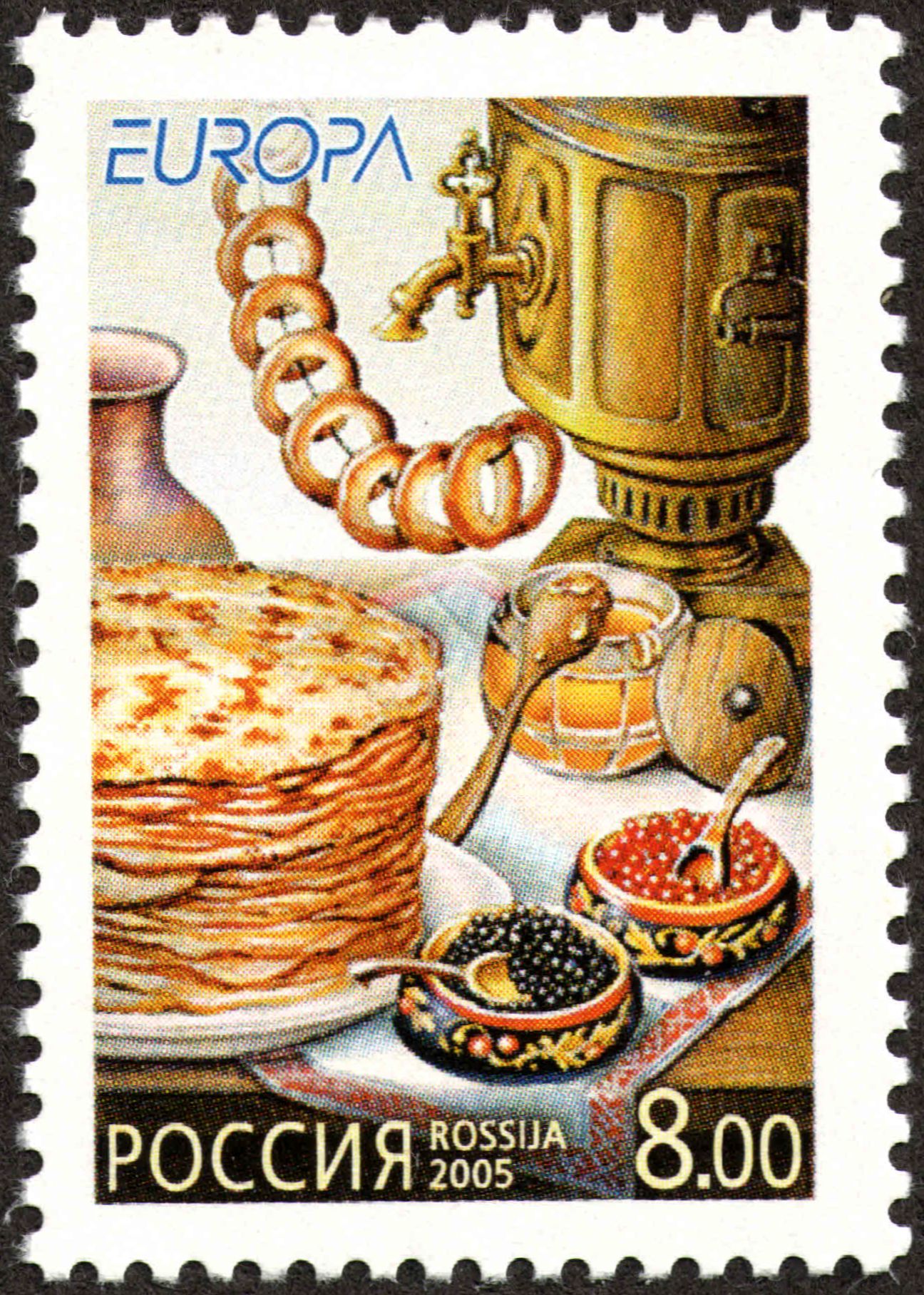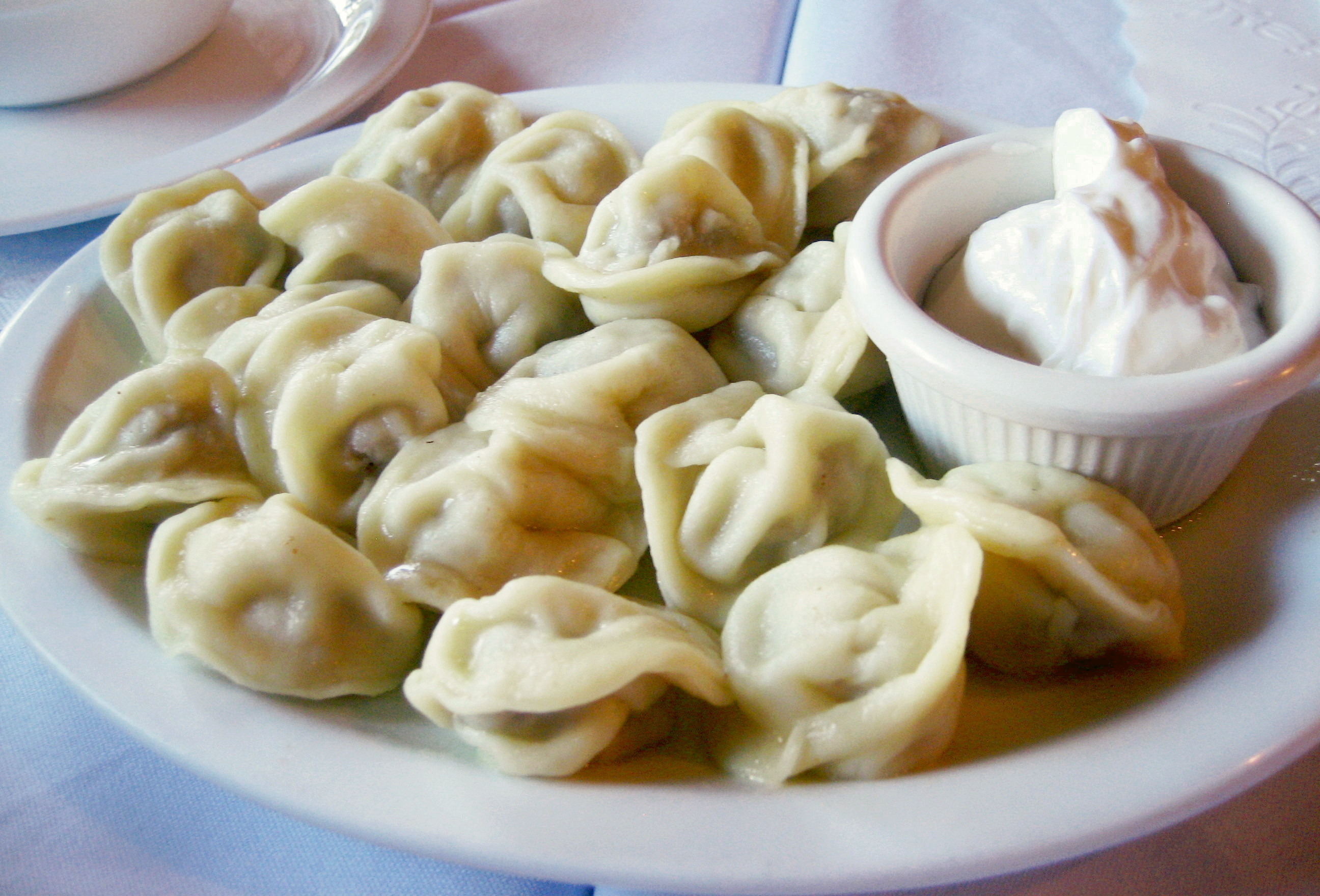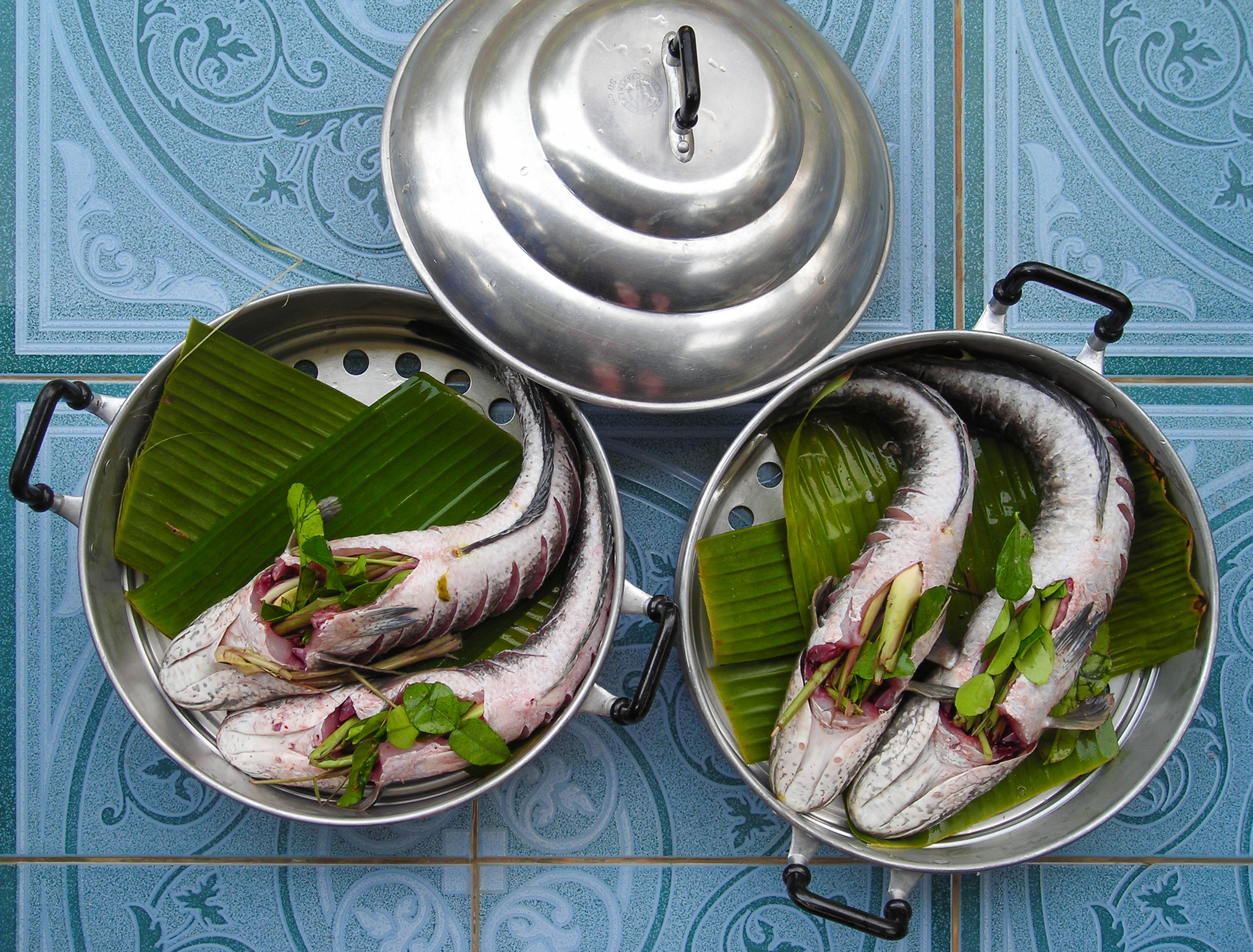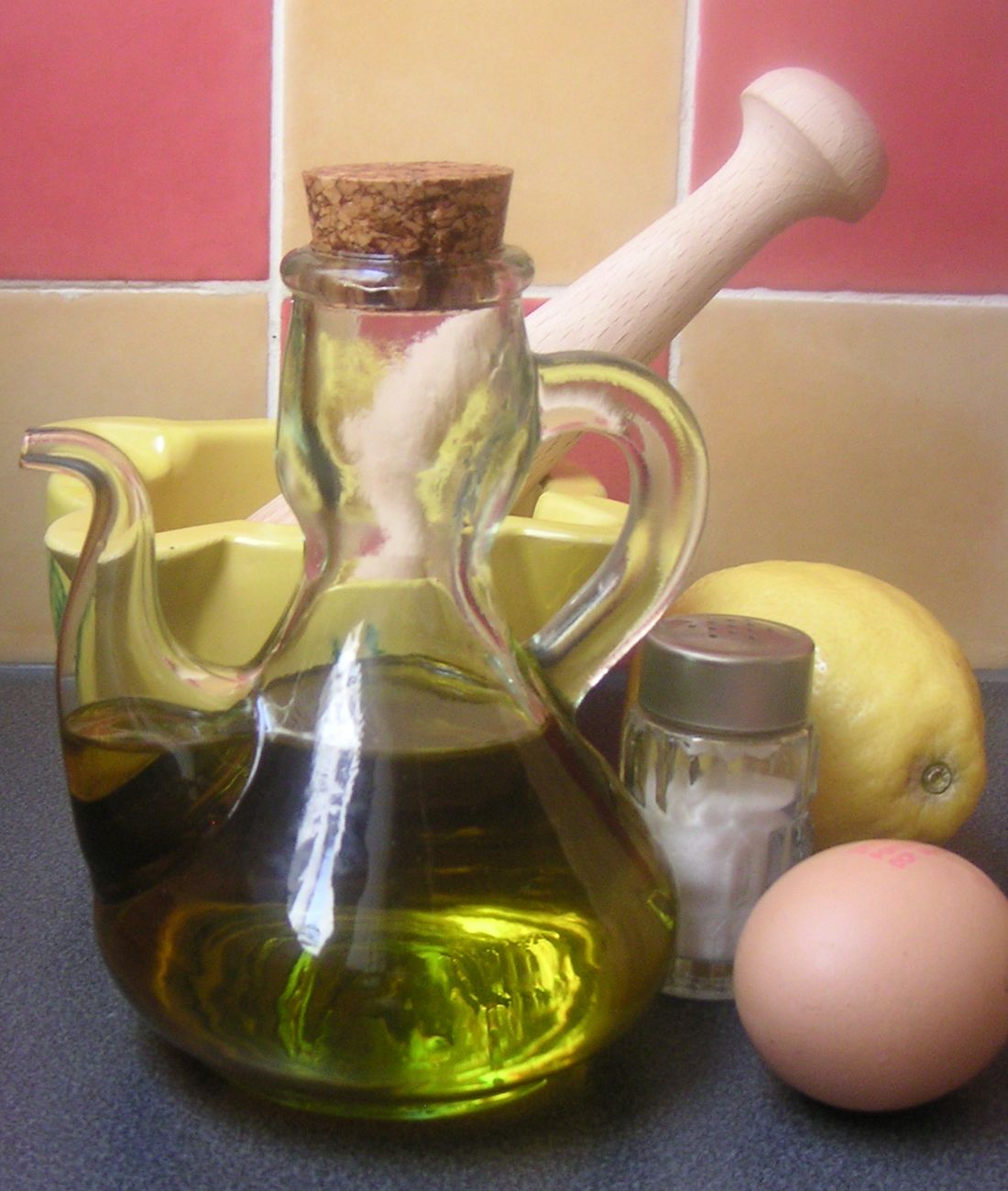|
Pelmeni
Pelmeni (, '' pel’meni'', ; pelmen, , '' pel’men’'', ) are dumplings of Russian cuisine that consist of a filling wrapped in thin, unleavened dough. They are considered to be a national dish. Pelmeni became a staple of Russian cuisine during the period of Russian expansion into the Ural Mountains and Siberia. Pelmeni also have deep roots in the traditions and folklore of the Komi region of northwest Russia and figure prominently in Komi cuisine. The name itself was borrowed from the language of the Komi-Permyaks. Description The dough is made from flour and water, sometimes adding a small portion of eggs. Pelmeni can be served in several ways; for example, they can be cooked in stock, or they can be cooked ''consommé'' and served in a bowl with soup. Pelmeni can be served as a main dish for lunch or dinner, either smothered in butter or prepared Siberian-style, which involves sprinkling them with vinegar and adding freshly ground pepper for extra flavor. The filli ... [...More Info...] [...Related Items...] OR: [Wikipedia] [Google] [Baidu] |
Russian Cuisine
Russian cuisine is a collection of the different dishes and cooking traditions of the Russians, Russian people as well as a list of culinary products popular in Russia, with most names being known since pre-Soviet times, coming from all kinds of social circles. History The history of Russian cuisine was divided in four groups: Old Russian cuisine (9th to 16th century), Old Moscow cuisine (17th century), the cuisine that existed during the ruling of Peter the Great, Peter and Catherine the Great (18th century), and finally Petersburg cuisine, which took place from the end of the 18th century to the 1860s. In the Old Russian period, the main food groups were bread, grains, and other foods that contained starch. Women baked pies with many different fillings, such as mushrooms or berries. During gatherings, a loaf of bread and salt was always present. Kasha, such as buckwheat and oats, were represented as wellbeing to the household. Many Russians used honey and berries and mad ... [...More Info...] [...Related Items...] OR: [Wikipedia] [Google] [Baidu] |
Dumpling
Dumplings are a broad class of dishes that consist of pieces of cooked dough (made from a variety of starchy sources), often wrapped around a filling. The dough can be based on bread, wheat or other flours, or potatoes, and it may be filled with meat, Fish as food, fish, tofu, cheese, vegetables, or a combination. Dumplings may be prepared using a variety of cooking methods and are found in many world cuisines. One of the earliest mentions of dumplings comes from the Chinese scholar Shu Xi who mentions them in a poem 1,700 years ago. In addition, archaeologically preserved dumplings have been found in Turpan, Turfan, Xinjiang, China dating back over 1,000 years. Definition The precise definition of a dumpling is controversial, varying across individuals and cultures. The term emerged in English by the 17th century, where it referred to a small lump of dough cooked by simmering or steaming. The definition has since grown to include filled dumplings, where the dough encloses ... [...More Info...] [...Related Items...] OR: [Wikipedia] [Google] [Baidu] |
Smetana (dairy Product)
Smetana is the English-language name for the different types of sour cream traditionally prevalent in Central Europe, Central, Eastern Europe, Eastern, and Southeastern Europe, and Central Asia. It is a dairy product produced by souring heavy cream. It is similar to ''crème fraîche'', but nowadays mainly sold with 9% to 42% milkfat content depending on the country. Its cooking properties are different from ''crème fraîche'' and the lighter sour creams sold in the US, which contain 12 to 16% butterfat. It is widely used in cooking and baking. In some of the Slavic languages (Czech language, Czech, Slovak language, Slovak, Slovene language, Slovenian) the sole word smetana refers to (sweet) cream. In these cases an adjective (zakysaná, kyslá, kisla) meaning 'soured' is needed when referring to smetana in the English sense. Uses and distribution Smetana is used in Central, Southeastern, and Eastern European cuisines in appetizers, main courses, soups and desserts. For examp ... [...More Info...] [...Related Items...] OR: [Wikipedia] [Google] [Baidu] |
Komi Peoples
The Komi ( also ) are a Permians, Permian ethnic group who are indigenous to, and primarily inhabit a region around the basins of the Vychegda, Pechora River, Pechora and Kama river, Kama rivers in northeastern European Russia. They mostly reside in the Komi Republic, Perm Krai, Murmansk Oblast, Khanty–Mansi Autonomous Okrug, and Nenets Autonomous Okrug in the Russia, Russian Federation. Name There have been at least three names for the Komi: ''Permyaks'' (), ''Zyrians'' (), and ''Komi'' (). The name ''Permyaks'' first appeared in Russian sources in the 10th century and came from the ancient name of the land between the Mezen River, Mezen and Pechora River, Pechora rivers – ''Perm'' or ''Great Perm'' (). Several origins of the name have been proposed, but the most accepted is from Veps language, Veps '''' "back, outer or far-away land". In Old Norse and Old English, it was known as ''Bjarmaland'' and '''' respectively, but those Germanic names designate a wider area than the R ... [...More Info...] [...Related Items...] OR: [Wikipedia] [Google] [Baidu] |
Sour Cream
Sour cream (sometimes known as soured cream in British English) is a dairy product obtained by fermenting regular cream with certain kinds of lactic acid bacteria. The bacterial culture, which is introduced either deliberately or naturally, sours and thickens the cream. Its name comes from the production of lactic acid by bacterial fermentation, which is called souring. Crème fraîche is one type of sour cream with a high fat content and less sour taste. Traditional Traditionally, sour cream was made by letting cream that was skimmed off the top of milk ferment at a moderate temperature. It can also be prepared by the souring of pasteurized cream with acid-producing bacterial culture. The bacteria that developed during fermentation thickened the cream and made it more acidic, a natural way of preserving it. Commercial varieties According to US ( FDA) regulations, commercially produced sour cream contains no less than 18% milkfat before bulking agents are added, a ... [...More Info...] [...Related Items...] OR: [Wikipedia] [Google] [Baidu] |
Udmurtia
Udmurtia, officially the Udmurt Republic, is a republics of Russia, republic of Russia located in Eastern Europe. It is administratively part of the Volga Federal District. Its capital city, capital is the types of inhabited localities in Russia, city of Izhevsk. It was established as the Udmurt (until 1931 — Votskaya) Autonomous administrative division, Autonomous Region on November 4, 1920. Name The name ''Udmurt'' comes from ('meadow people'), where the first part represents the Permic root or ('meadow, glade, turf, greenery'). This is supported by a document dated 1557, in which the Udmurt people, Udmurts are referred to as ('meadow people'), alongside the traditional Russian name . The second part means 'person' (cf. Komi language, Komi , Mari language, Mari ). It is probably an early borrowing from a Scythian languages, Scythian language: or ('person, man'; Sanskrit: Manus or Manushya), which is thought to have been borrowed from the Sanskrit language, Indo-Ary ... [...More Info...] [...Related Items...] OR: [Wikipedia] [Google] [Baidu] |
European Russia
European Russia is the western and most populated part of the Russia, Russian Federation. It is geographically situated in Europe, as opposed to the country's sparsely populated and vastly larger eastern part, Siberia, which is situated in Asia, encompassing the entire North Asia, northern region of the continent. The two parts of Russia are divided by the Ural Mountains and Ural (river), Ural river, bisecting the Eurasia, Eurasian supercontinent. European Russia covers the vast majority of Eastern Europe, and spans roughly 40% of Europe's total landmass, with over 15% of its total population, making Russia the List of European countries by area, largest and List of European countries by population, most populous country in Europe. The region is divided into five Federal districts of Russia, Federal districts. Area and demographics European Russia accounts for about 80% of Russia's total population. It covers an area of over , with a population of nearly 110 million—making R ... [...More Info...] [...Related Items...] OR: [Wikipedia] [Google] [Baidu] |
Komi Cuisine
Komi cuisine consists of the cuisine of the Komi Republic and the Komi peoples, and is characterized by the rich use of local foods. Significant differences separate Komis' dining tendencies in the northern and southern regions of their homeland. In the northern reindeer herding and hunting areas, meat is eaten daily, but it is not in the more agricultural south. In the south, fish is commonly eaten; hogs and poultry are eaten less often. Komi women bake fish pie () on festive family occasions. The Fish Pie Festival () is held annually on the last Sunday of June in the village of Byzovaya, Pechora Pechora (; ) is a types of inhabited localities in Russia, town in the Komi Republic, Russia, located on the Pechora (river), Pechora River, west of and near the northern Ural Mountains. The area of the town is . Population: History Pechor ... Raion. References Komi Republic Russian cuisine {{cuisine-stub ... [...More Info...] [...Related Items...] OR: [Wikipedia] [Google] [Baidu] |
Venison
Venison refers primarily to the meat of deer (or antelope in South Africa). Venison can be used to refer to any part of the animal, so long as it is edible, including the internal organs. Venison, much like beef or pork, is categorized into specific primal cut, cuts, including roasting, roast, sirloin steak, sirloin, and ribs (food), ribs. Etymology The word derives from the Latin , meaning . This term entered the English language through Norman French in the 11th century, following the Norman Conquest of England and the establishment of Royal Forests. Definition ''Venison'' originally described any meat obtained through the process of hunting a wild game animal. It was applied to any animal from the family (biology), families Cervidae (true deer), Leporidae (rabbits and hares), Suidae (wild boar) and certain species of the genus ''Capra (genus), Capra'' (goats and ibex). In Southern Africa, the word ''venison'' refers to the meat of antelope, a Bovidae taxon, as there are n ... [...More Info...] [...Related Items...] OR: [Wikipedia] [Google] [Baidu] |
Fish As Food
Many species of fish are caught by humans and consumed as food in virtually all regions around the world. Their meat has been an important dietary source of protein and other nutrients in the human diet. The English language does not have a special culinary name for food prepared from fish like with other animals (as with '' pig'' vs. ''pork''), or as in other languages (such as Spanish '' pez'' vs. '' pescado''). In culinary and fishery contexts, ''fish'' may include so-called shellfish such as molluscs, crustaceans, and echinoderms; but, more expansively, ''seafood'' covers both fish and other marine life used as food. Since 1961, the average annual increase in global apparent food fish consumption (3.2 percent) has outpaced population growth (1.6 percent) and exceeded the increase in consumption of meat from all terrestrial animals except poultry (4.9 percent), both combined (2.8 percent) and individually (bovine, ovine, porcine, et cetera). In ''per capita'' terms, f ... [...More Info...] [...Related Items...] OR: [Wikipedia] [Google] [Baidu] |
Mayonnaise
Mayonnaise (), colloquially referred to as "mayo" (), is a thick, creamy sauce with a rich and tangy taste that is commonly used on sandwiches, hamburgers, Salad#Bound salads, bound salads, and French fries. It also forms the base for various other sauces, such as tartar sauce, fry sauce, remoulade, salsa golf, ranch dressing, and rouille. Mayonnaise is an emulsion of Edible oil, oil, egg yolk, and an acid, either vinegar or lemon juice; there are many variants using additional flavorings. The color varies from near-white to pale yellow, and its texture from a light cream to a thick gel. Commercial eggless versions are made for those who avoid chicken eggs because of egg allergies, to limit cholesterol, dietary cholesterol, or because they are vegetarian or Veganism, vegan. History ''Mayonnaise'' is a French cuisine appellation that seems to have appeared for the first time in 1806. The hypotheses invoked over time as to the origin(s) of mayonnaise have been numerous and c ... [...More Info...] [...Related Items...] OR: [Wikipedia] [Google] [Baidu] |







